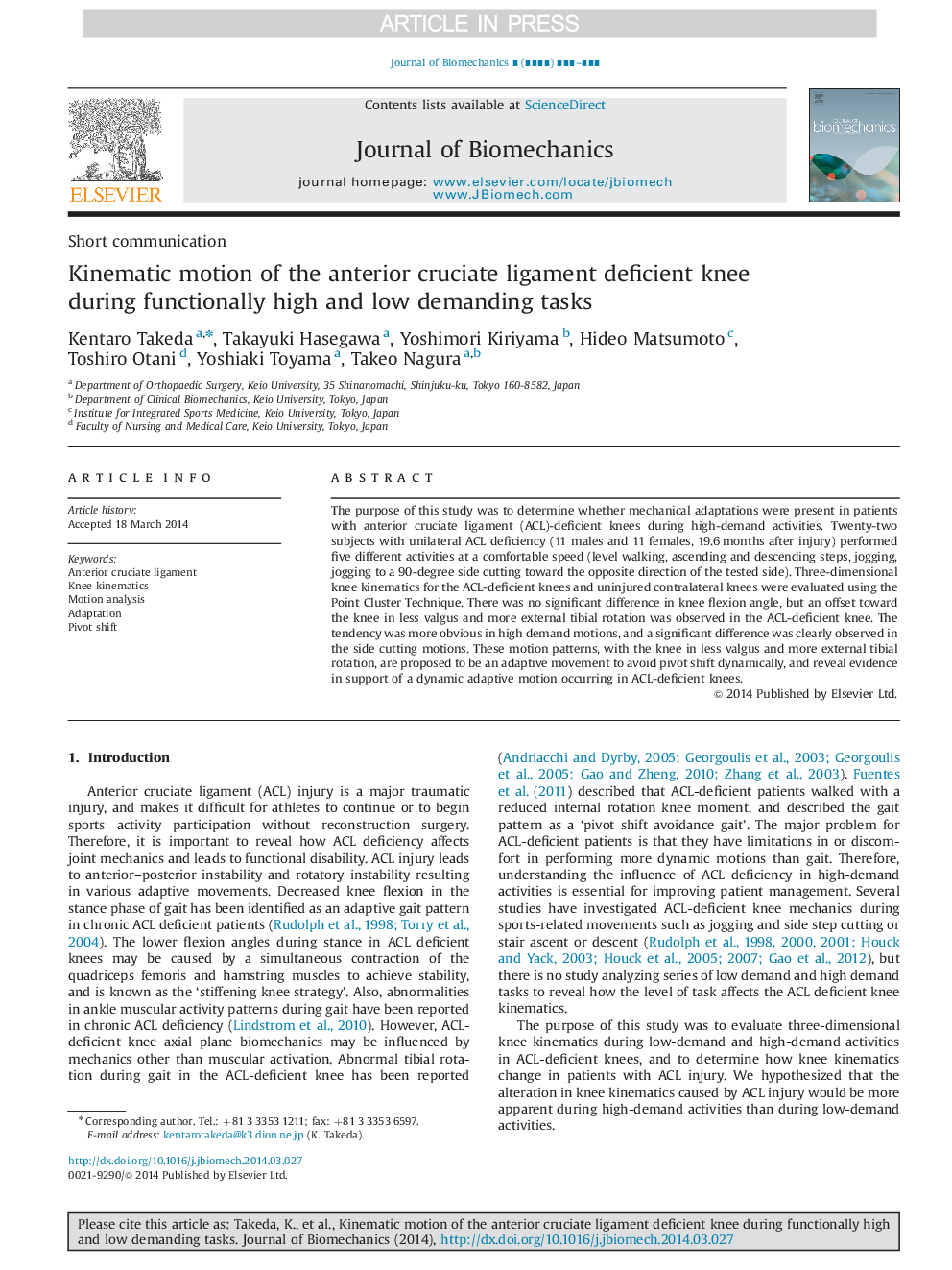| Article ID | Journal | Published Year | Pages | File Type |
|---|---|---|---|---|
| 10431814 | Journal of Biomechanics | 2014 | 5 Pages |
Abstract
The purpose of this study was to determine whether mechanical adaptations were present in patients with anterior cruciate ligament (ACL)-deficient knees during high-demand activities. Twenty-two subjects with unilateral ACL deficiency (11 males and 11 females, 19.6Â months after injury) performed five different activities at a comfortable speed (level walking, ascending and descending steps, jogging, jogging to a 90-degree side cutting toward the opposite direction of the tested side). Three-dimensional knee kinematics for the ACL-deficient knees and uninjured contralateral knees were evaluated using the Point Cluster Technique. There was no significant difference in knee flexion angle, but an offset toward the knee in less valgus and more external tibial rotation was observed in the ACL-deficient knee. The tendency was more obvious in high demand motions, and a significant difference was clearly observed in the side cutting motions. These motion patterns, with the knee in less valgus and more external tibial rotation, are proposed to be an adaptive movement to avoid pivot shift dynamically, and reveal evidence in support of a dynamic adaptive motion occurring in ACL-deficient knees.
Related Topics
Physical Sciences and Engineering
Engineering
Biomedical Engineering
Authors
Kentaro Takeda, Takayuki Hasegawa, Yoshimori Kiriyama, Hideo Matsumoto, Toshiro Otani, Yoshiaki Toyama, Takeo Nagura,
